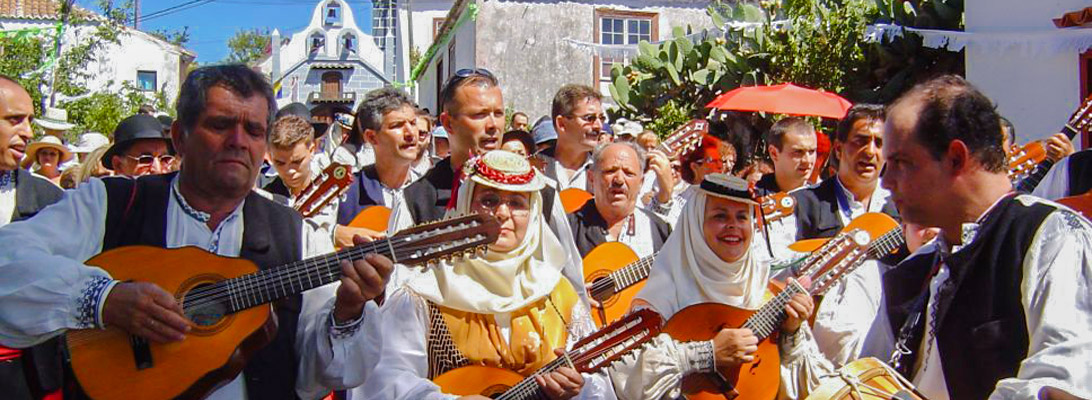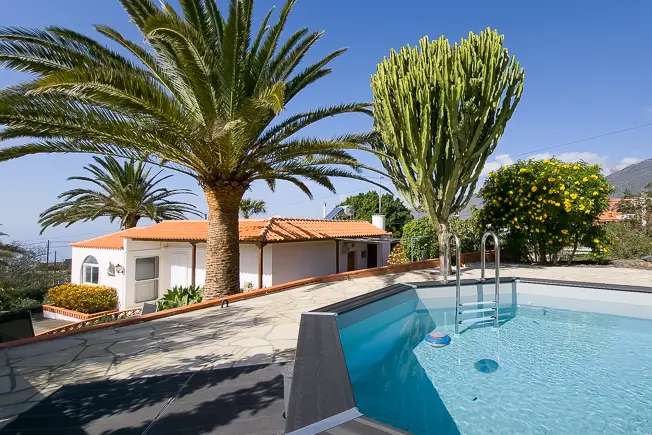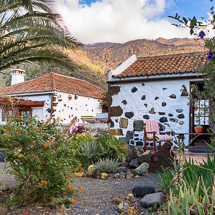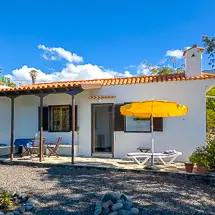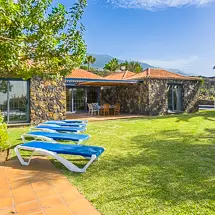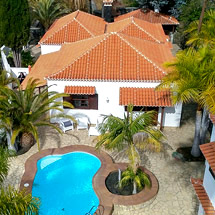Festivals and folklore are very lively traditions on La Palma, which are not only kept alive for tourists but are also cultivated by the Palmeros. In addition to the rich culinary tradition, this includes traditional music, dances, and costumes, but also ancient customs and sporting competitions such as the Canarian wrestling match (Lucha canaria), Calabazos, shepherd jump and stick fight.
Lucha canaria
In this wrestling match, handed down from the palmeric natives two teams of twelve men (or women) try to wring each other down one after the other. Known fighters are swarmed around like stars. The competitions are prominently reported in the local media. The fight takes place barefoot and in trousers rolled up. It is about strength and fairness. Painful blows or kicks are forbidden. In three rounds of about two minutes, one of the two fighters must have been brought down. If you go down twice, you lose.
Lucha Canaria in El Mazo
During the season (February to May), many places on La Palma host weekend competitions in well-attended arenas (sand courts ten meters in diameter). A wrestling match in the multi-purpose hall of El Mazo is recommended. Competitions with teams from the other Canary Islands have made the Lucha one of the most popular sports of the Palmeros. The towns of Santa Cruz, Breña Alta, Mazo, Fuencaliente, Las Manchas, Los Llanos, Tazacorte and Tijarafe are organized in leagues.
Pastoral Jump (Salto del Pastor)
Like the Canarian wrestling fight this tradition probably also goes back to the pre-Hispanic Benahoaritas, the Palmeric natives. Goat herders had to make great leaps in the steep rocky terrain of La Palma at all times in order to catch up their herds quickly. The sporty shepherd jumps with the help of a three to four-meter long wooden stick ("lanza") often seem breathtakingly high. Masters of their trade can also climb uphill or over obstacles on the jump pole. Several clubs teach this old pastoral art, which also exists on the other Canary Islands. At the lower end, the pole is reinforced by a metal tip. In order to jump downhill, the shepherd places the tip on the deepest point of the terrain and lets himself glide down. To reach a higher place, the shepherd swings up the pole to the desired spot. In La Galga (Puntallana) a stylized monument reminds of the old Palmeric discipline of the salto.
Juego del Palo (stick fight)
The stick fight on La Palma probably goes back to old Canarian traditions. Today's stick fighting requires a high degree of skill and good training.
Riego de Calabazo (water scooping)
The drawing of water with the help of hollowed out pumpkins (calabazo) used to be a pure necessity for irrigating the fields in Palmeric agriculture, especially in the Aridane Valley. With the help of a pumpkin half attached to a stick, water was scooped from an irrigation ditch into a higher water tank. In the past, the farmers were not allowed to feed the water directly from the tap to their fields but were forced to scoop it from their hands. A Calabazos competition requires strength and endurance. In Argual a monument commemorates this Palmeric tradition.







